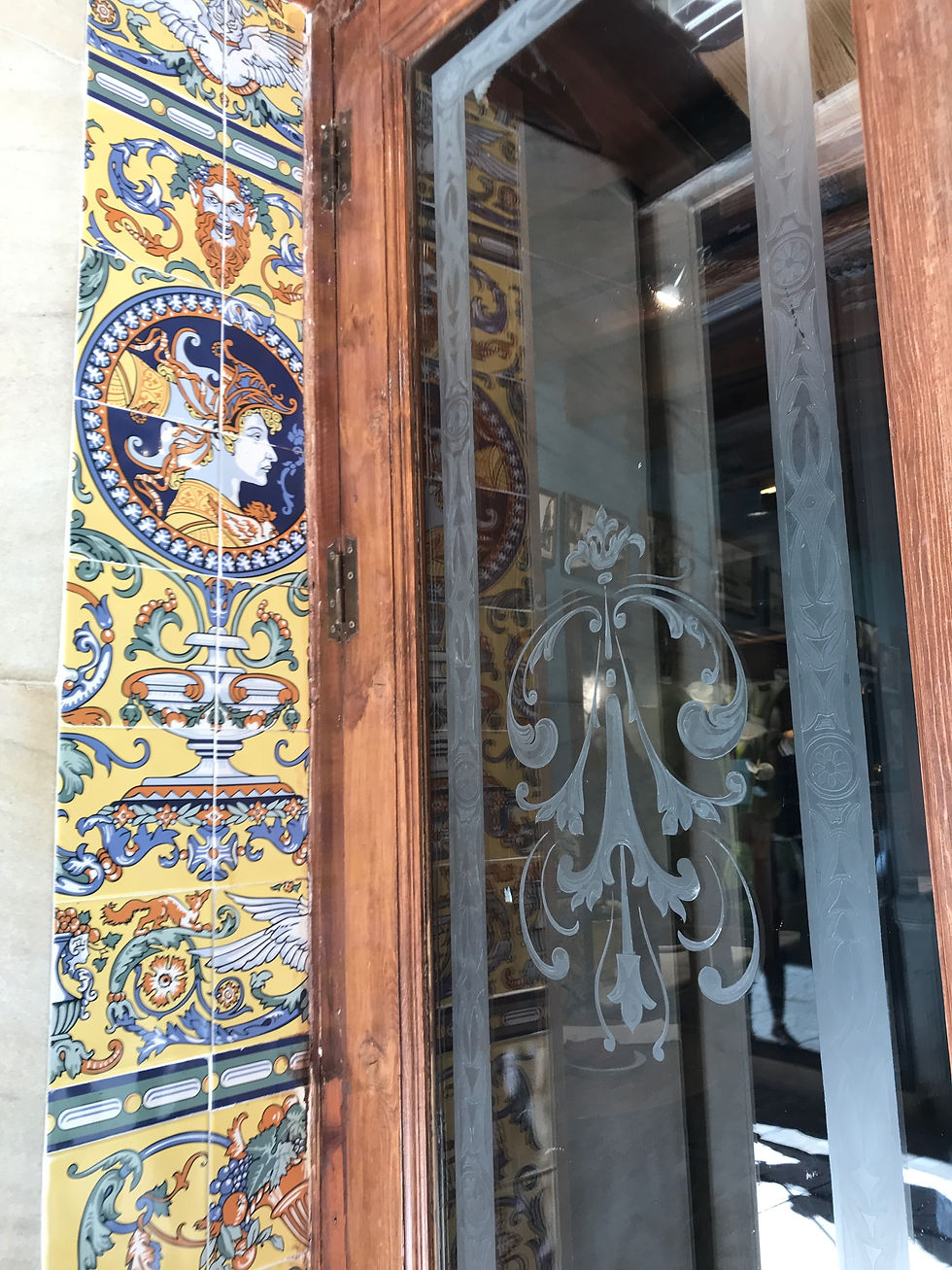España, Parte Dos: Málaga
- Admin
- May 2, 2018
- 3 min read



Málaga, Spain, April 29 — I think Viking decided to put in here on the Costa del Sol so they could offer the Alhambra in Granada as an excursion. But that fabulous Moorish fortress-palace, which I visited in 2010, would only make 66 tickets available for the day we would be in the area. There were many disappointed Vikings. The Alhambra didn’t care: they get 8500 visitors a day without us. I chose to do ‘Panoramic Málaga & Picasso Museum’ and was delighted.
About Málaga... After the early Iberians came the (repeat after me) Phoenicians (around 800 BC) followed by Greeks, then Romans (for 400 years), Vandals, Visigoths, then Moors (800 years) and finally Christians, after Ferdinand and Isabella led the reconquista to oust the Moors and establish Catholicism. One of the oldest cities in the world, Málaga rose to be the capital of the Spanish Moorish region. It was one of the last Moorish bastions to fall. When Granada fell in 1492, Moorish rule ended, and Spain’s Golden Age began.
Málaga is located in the region of Andalusia, what the Moors named al-Andalus. Its main industries are tourism, construction and IT. The population is about 570,000 in the winter — in the summer, vacationers push that up to 13 million!
We bussed into the city, walked around, visited assorted sites and ended up at the Museo Picasso Málaga. Being a walking tour (not a bus tour) my note-taking fell short, or maybe my notes fell out of my pocket, because I don’t have much written down about what we saw. If I know what it is, I will tell you. If I don’t, I won’t.
The remains of La Alcazaba, the Moorish Citadel, high above the city.

People rub his head for luck. Like the snout of the Cinghiale (wild hog) in Firenze.

Pablo is sitting in the plaza in front of the Fundación Picasso, also known as the Pablo Ruiz Picasso Foundation, whose purpose is to ‘promote and promulgate‘ his work. Pablo was born in this cream and green building, though he only lived there as a child before his art teacher father moved the family to Galicia, in the far northwest of Spain.

Beautiful Tower of Something... has a distinct arabic feel.



We had a few minutes to spare before our schedules museum visit, so our excellent guide Lulu (she’s a Lulu!) took us into one of the most charming café/bars I have ever been in, El Pimpi, with plants everywhere and photos of celebrities all over the walls.

You know me and doorways... this was the entrance to the Museo Picasso, and the last place I could use my camera.

Our guided tour of the museum lasted an hour and our museum guide was fantastica — knowledgeable and impassioned. She possesses what the Spanish call duende, which Wiki translates as ‘soul, a heightened state of emotion, expression and authenticity, often connected with flamenco.’ She is also an artist and has studied Picasso’s works and writings extensively. I know a lot more about him than I did before.


It was communion day and all the little girls were parading into the church with their parents, who were as dolled-up as they were. Spanish women have such style.

Normally a tourist enters a church and is respectfully quiet while the silent congregation prays. Not on communion Sunday. The place was alive with chatter and laughter and photo-taking.

Street mimes. This one gets my vote. Oh, my shoulders.

This one, on the other hand, would hold a pose for ten seconds, then take a cigarette break. If I tell you that the odd-shaped object atop the boat is a marlin, do you get it?

The façade of the Catedral de Málaga, a very impressive albeit never-finished monument. It took so long to build (1528-1782) that it combines Gothic, Renaissance and Baroque elements. And it was never finished since the money finally ran out.


The stain glass window fund also fell short — there are some, but there are also none...

I would really love to be here when both organs are in full force: there are 4,000 each = 8,000 pipes.

And if that wasn’t glorious enough, here’s the building you see when you depart the Cathedral...


Plaza de la Constitución, the usual rallying place for festivals — and protests.

Here’s an ordinary everyday entrance to a small everyday restaurant...

Al-Andalus is the birthplace of flamenco.

This Teatro Romano dates from the 1st century AD — but wasn’t unearthed until 1951. Work continues on its restoration.

The corner of the neo-Baroque-style City Hall, completed in 1919.

The other corner of City Hall — and La Alcazba, the citadel, and the sparse remains of the 14th-century Castillo de Gibralfaro...

Speaking of Gibralfaro... here’s the Rock of Gibraltar. We passed it around 10 p.m. that night on our way through the strait and into the great, gray Atlantic, en route to my last Continental port of call: Porto, Portugal. #



Comments